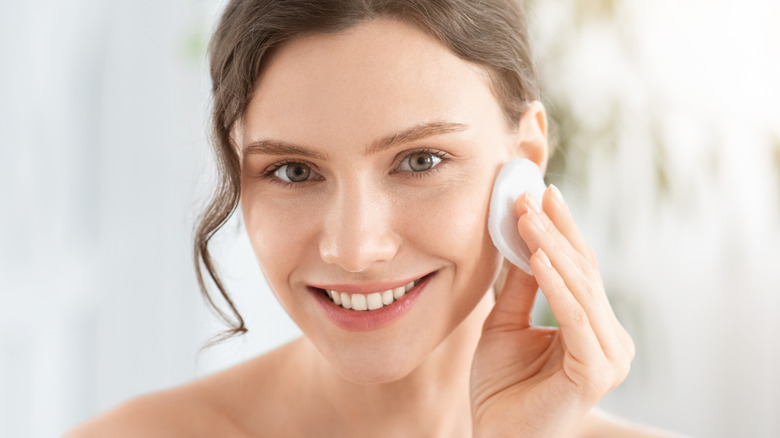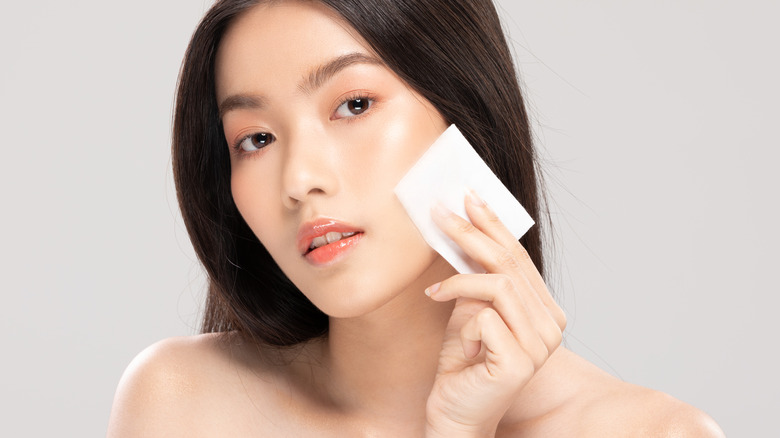This Is The Big Difference Between A Toner And An Astringent
If you've happened to be out shopping for new skincare, there's a chance you've seen products labeled as toners and astringents. While they're often displayed together along with essences, there are significant differences between the two products. They're often even listed under the same shopping category of toners, but it's important to note which you're purchasing because they're not the same product.
Like with every skincare or makeup product, you should do research before you buy toners and astringents as it can be the difference between a product working for you or harming your skin. Healthline notes that when purchasing an astringent or toner, you should first ensure you understand your skin and its needs. As is the case with most products, your skin type will determine which products you may use that can best help you.
When comparing astringents or toners, the differences may seem minimal, but the results can make a big difference on your skin. Therefore, you have to examine what they do and how they work.
What's a toner, and how do you use it?
According to Peach & Lily founder Alicia Yoon, the main job of a toner is to balance your skin's PH after cleansing it. After using a cleanser, your skin becomes more susceptible to outside aggressors. This weakened defense can leave your skin dehydrated, irritated, and inflamed. Toners are typically water-based and can also help remove any dirt that may have remained after the cleanser. Anyone looking to use a toner should first be able to handle a bit of acidity on the face. You can use toners to improve the skin texture and even out your skin, too (via Allure).
With all the extra ingredients in toners, they're a safe product to use regardless of skin type. According to Verywell Health, apply toner after cleansing with either a cotton pad or your hands. Although the benefits of toners seem to be excellent, there's still no scientific proof of how efficient toners are in beauty routines.
What's an astringent, and how do you use it?
Astringents, although very similar, are different than toners. These products are also water-based and typically used after cleansers. However, astringents use alcohol to remove excess oil from the skin and shrink the appearance of pores. With their alcohol content, astringents are most likely to dry your skin more than a toner. Astringents would be the best for those with oiler skin or acne-prone skin (via Byrdie).
It's easy to overdry your skin while using an astringent. For this reason, it may be better to use a product like witch hazel that can offer the same benefits and aggressiveness you need. Witch hazels are a perfect stepping stone to most astringents as they are natural astringents and do not contain alcohol content. Like toners, use astringents with a cotton pad or from the hands. You also want to use moisturizers as soon as possible after astringent to avoid overdrying the skin. Astringents should also not be around the eye area because of their potency and harshness (via Thayers).


